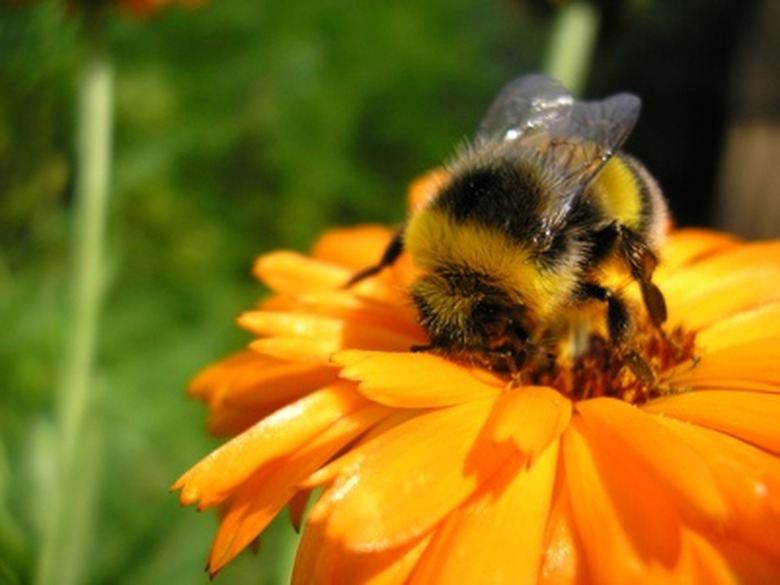Types Of Natural Beehives
Approximately 20,000 different species of bees exist worldwide, occupying every habitat that contains flowering plants. Bees live in a symbiotic relationship with flowers, having evolved a long tongue or proboscis for lapping up nectar. Many bees are social insects, living and working together in highly organized colonies or communities. They live in various kinds of natural habitations called hives or nests.
Hollow Trees
Hollow Trees
Feral or wild Apis mellifera honeybees are eusocial, meaning they live in large, well-organized colonies employing a strict division of labor in regards to building and maintaining hives and caring for offspring. Commonly building their hives in hollow trees, they are cavity dwellers, a characteristic that makes the species easily domesticated. In the wild, they will seek out an enclosed space with a capacity of 15 to 100 liters in which to build their hive. Once the bees have selected a suitable tree with a hollow trunk high enough off the ground to deter honey hunters and with a south-facing, downward-pointing entrance, they set to work preparing their new hive. The bees strip off outer layers of bark to smooth the walls, then seal and coat them with propolis or "bee glue" made from tree and plant resins in preparation for building wax honeycombs.
Underground Hives
Underground Hives
Bumblebees, of the genus Bombus, prefer to locate their natural beehives underground, usually in abandoned animal burrows and tunnels. After emerging from hibernation in the spring the queen bumblebee will select a hive site, as bumblebees only use a nest for one year. She will line the hole in the ground with dry grass and moss in preparation for the first brood of worker bees. The workers will sometimes build a wax canopy over the hive entrance to deter their predators, mainly skunks.
Aerial Hives
Aerial Hives
Aerial, or open-air, hives are constructed by southeastern Asian honey \bees belonging to the genera Micrapis and Megapis. These permanent natural hives are similar to the temporary swarm nests of the Apis mellifera honey bees. The Asian bees construct honey and brooder combs attached to exposed tree limbs or cliff faces. They coat the immediate surrounding area with waxy propolis to prepare it for comb construction. The parallel, evenly spaced, rows of combs are covered by the bodies of the bee colony members for protection from the elements and predators. During rainstorms the bees on the outer layer extend their wings over the swarm to keep the inner combs dry.
Cite This Article
MLA
Whitmer, Phil. "Types Of Natural Beehives" sciencing.com, https://www.sciencing.com/types-natural-beehives-6893402/. 22 November 2019.
APA
Whitmer, Phil. (2019, November 22). Types Of Natural Beehives. sciencing.com. Retrieved from https://www.sciencing.com/types-natural-beehives-6893402/
Chicago
Whitmer, Phil. Types Of Natural Beehives last modified March 24, 2022. https://www.sciencing.com/types-natural-beehives-6893402/
